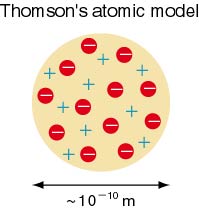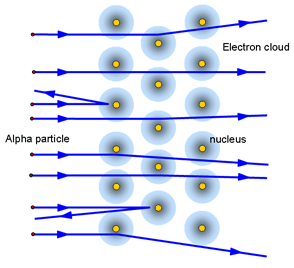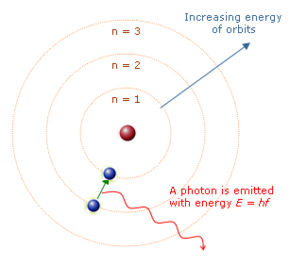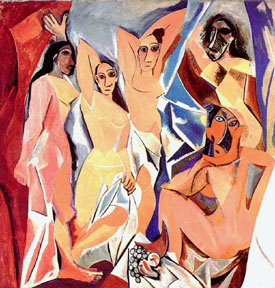How Invention Begins ch. 14
Review:
what are the key ideas in this book, what issues does he want you to think about:
what are the key ideas in this book, what issues does he want you to think about:
- zeitgeist--the time is right--a large number of people want a new technology so it motivates people to invent it
- technological progress speeding up--what caused that, when?
- three steps as a way of analyzing the evolution of technology--gestation, cradle, maturation
- multiple inventors--inventions don't normally appear out of nothing in one person's head
- who gets the credit for an invention?
- it depends on what you define the invention to be
- it may depend on how well they sell themselves and
their idea
- the impact of a technology on society
- effects on how people live, effects on ideas, effects on how fast innovations spread
- technologies often have unexpected effects
- what encourages technological progress?
- how technology builds on itself
- how do science and technology interact?
- how does knowledge spread?--books, education, people who move from one place to another, apprenticeship
- history and mythology--we tell stories about the past that may not be entirely accurate but make broader points. (A myth isn't necessarily false, it is symbolic story)
- try and think of a couple more as you study
If inventions are invented by many different people, then should inventors like the Wright Brothers be heroes?
The people we remember as heroes are not sole inventors but the one at the tipping point
We want things to be predictable but actually there is an interesting point where they are not, where the situation could go either way.
On p. 236 Lienhard says: "Now the twentieth century has given us first quantum indeterminacy and then chaos theory. We struggle to create a new description of a reality, which, as we begin to see, is not so straightforward. ...it has become much clearer that we no longer live in a simple world where we can imagine only one outcome."
Do you know what he is talking about?
Since the invention of Quantum Mechanics, science has said the world is not simple and linear and predictable
A quick run through the new
view of the atom:
- the discovery of elements suggested that atoms of the different elements were the basic building blocks of everything (the first scientific discovery of an element was in 1649)
- Newton thought light was made up of particles but research in the 1820s showed that light behaves like a wave

- in 1897 J. J. Thompson discovered the electron (by seeing that electric current could pass through the vacuum in a vacuum tube)--the atom is not a bowling ball but has a positively charged part and a negatively charged part that can be separated. Thompson thought that atoms looked like raisin bread, with electrons embedded in them
-
- in
1901
Planck proved theoretically that energy is emitted
in units (quanta), not as a continuous stream.
This could not be explained within the classical theory
of physics, so Planck concluded that the laws of
classical physics do not apply to atoms
- in 1905 Einstein published three important papers
- one showed that the photoelectric effect (where light hitting certain materials will create an electrical current) behaves in such a way that light must be particles with particular energy, not continuous waves
- the second paper was the special
theory
of relativity--time moves slower as you get
closer to the speed of light
- the third explained Brownian motion, providing evidence that atoms really existed
- Ruth
 erford scattering
erford scattering
- In 1908 Ernst Rutherford did an experiment where he beamed alpha particles at a piece of very thin gold foil. Alpha particles were known to be very small atoms (actually the nucleus of the helium atom) and gold was made up of big atoms. Most of the alpha particles passed through the foil, but some bounced back. The shocking conclusion was that most of the atom was empty space. This led Rutherford to propose in 1911 the idea that the atom looked something like the solar system, with a small dense positively-charged nucleus with electrons swirling around it.
- in 1913 Niels Bohr proposed that the electrons can only travel in fixed orbits around the nucleus, so when electrons move from a higher orbit to a lower one they emit radiation with a fixed amount of energy.

- in 1924 de Broglie theorized that not only light but also electrons and other subatomic particles have the properties of particles and the properties of waves at the same time
- in 1925 Werner Heisenberg put together the pieces
of quantum mechanics. This required the idea that
an electron moved from one orbit to another orbit
without passing through the space in between as well as
the uncertainty principle (below)
People began to see the world in a new way:
- matter was no longer solid--we could see through it
- science isn't going to be straightforward and commonsense and reassuring any more:
"Nature and Nature's Laws
lay hid in Night/
God said, Let Newton be! and all was Light." -- Alexander Pope.
"It did not last; the Devil howling 'Ho!
Let Einstein Be!' restored the status quo." - John Collings Squire
God said, Let Newton be! and all was Light." -- Alexander Pope.
"It did not last; the Devil howling 'Ho!
Let Einstein Be!' restored the status quo." - John Collings Squire
- Heisenberg
Uncertainty Principle--we cannot observe an atom without
affecting it--until then its position and movement cannot
be known for sure. Schrodinger's
cat is an illustration of this.
- pointillism and cubism in art, atonality in music, Joyce's Ulysses
- our view of reality fragmented
- the first powered flight
- Matlab recreation
- even if we just look at the propellor used by the
Wright brothers, there are many parts of the invention.
- did anyone watch the 2003 recreation of the Wright brothers first flight?--it was only going to fly with just the right wind. The recreation of the Wright flyer is only stable between 27 and 32 mph, and the engine has no throttle. So the recreation would only work if wind conditions were just right. It could not take off without wind--they were hoping for 12 to 17 mph of steady wind.
- gestation--background research but the goal is not
very specific (the invention has not yet taken an
identifiable form)
- cradle--lots of people playing with different
possibilities with a goal in mind. This is when the
tipping point happens--a key inventor puts the pieces
together into something that works and convinces people
that it works
- maturation--solving the problems of using the
technology
Lienhard wants to be careful not to have the idea that the time was right for a technology lead to saying that a particular technology is inevitable, an idea we will come back to with Nye
Make sure you see that both can be true:
- Zeitgeist--the time is right
- uncertainty--the particular outcome isn't predictable
